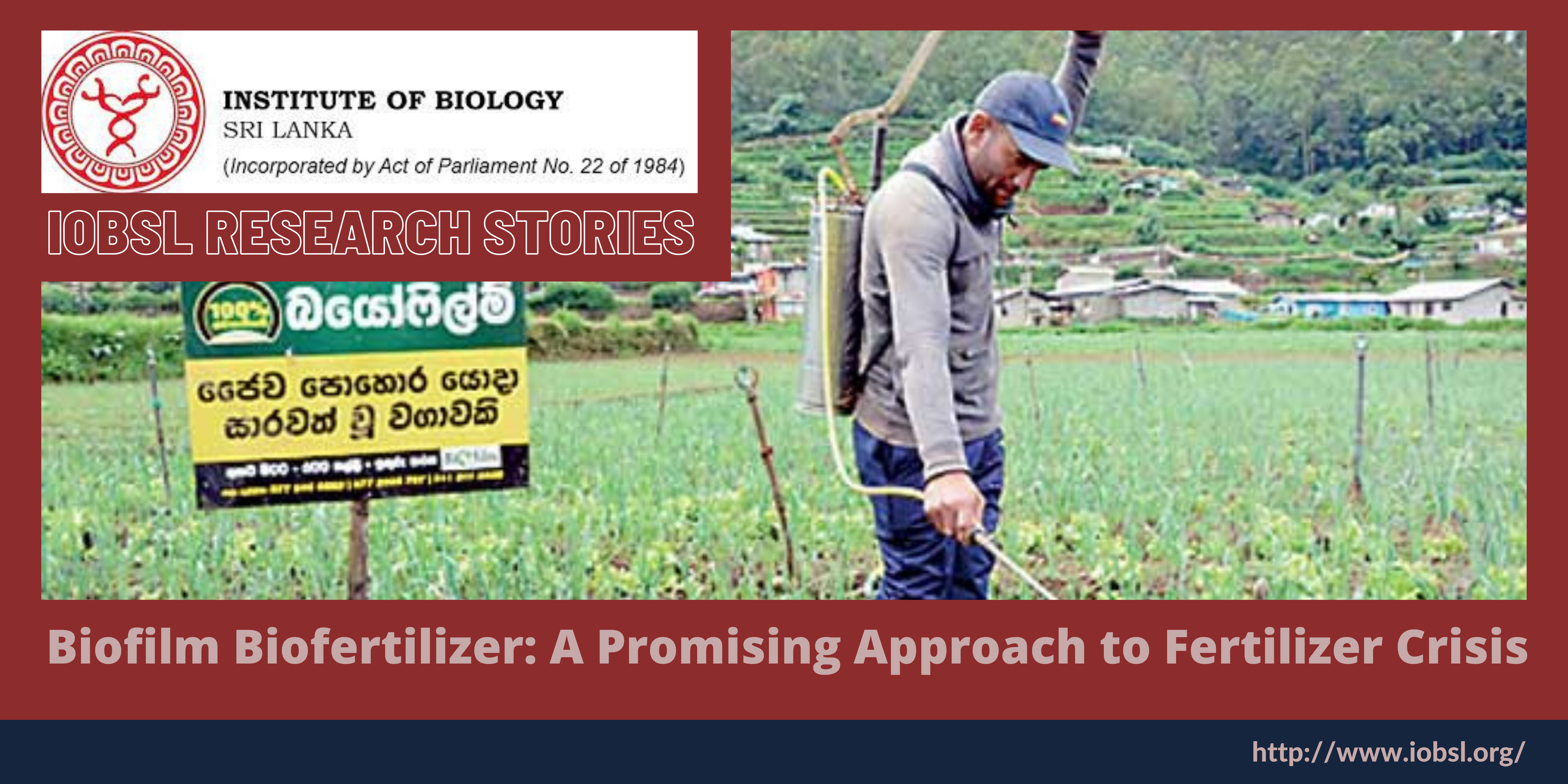Recent research conducted at National Institute of Fundamental Studies (NIFS), Kandy has offered a promising solution to the much-debated fertilizer issue in the country. Applying Biofilm Biofertilizer (BFBF) to the crop rice (Oryza sativa L.), has shown to replace about 50% of chemical fertilizer while increasing the yield by 24%. The research group led by Professor Gamini Seneviratne at Microbial Biotechnology Division of NIFS revealed this notable discovery in one of their recent papers published in Ceylon Journal of Science. In addition to the yield, a significant increase of the solid dry weight of the shoot was also observed during the study. Interestingly, biofertilizer was needed only in a smaller amount such as 1 liter per acre. Through microbial intelligence and memory effect, the biofertilizer stimulated the reestablishment of biodiversity that was suppressed due to stress conditions. Accordingly, the research has shown the successful application of biofilm biofertilizer to enhance rice productivity through increasing the microbial diversity and abundance, and also network interactions.
Biofilms are collective of one or more types of microorganisms that are attached to a surface with intricated functional structures and advanced mechanisms such as labor division to perform the expected tasks efficiently, a sign of intelligence. They exudate different compounds that are capable of breaking dormancy of soil microbial, faunal and plant seed banks developed due to stress, thus leading to restoration of biodiversity. These exudates also contain protein network components and also metabolic and signaling network components. Accordingly, the availability of nutrients for the crop, soil fertility, material circulation can be enhanced via microbe-mediated networks. In addition, a special process called quorum sensing enables them to communicate with each other, coordinate their gene expression and behavior in response to changes in the environment, which is also another sign of intelligence.
This finding is undoubtedly of paramount importance in establishing a sustainable agricultural system as it paves the way to gain the maximum contribution of the natural intelligence without any negative impacts in return. In the mission of revolutionizing the agricultural system of Sri Lanka, such knowledge can be utilized effectively to increase the quality and quantity of the yields of major crops, while conserving nature.

Nature maintains its stability and sustainability through continuous interactions that occur between its abiotic and biotic network components. However, manmade ecosystems have been unable to retain these interactions, therefore are often recognized as unstable, less productive and unsustainable.
Modern agriculture involves many agronomic practices, that impose severe threats on these natural interactions. Tillage and chemical inputs associated with these ecosystems contribute heavily in the disruption of those networks. During the preparation of the land, adding fertilizer and many other activities, soil is subjected to stress which hinders the existence of many favorable organisms due to their transformation to dormant forms, thereby disrupt the natural interactive networks. It is of utmost importance to recognize the ways to reinstate the collapsed networks within agro-ecosystems in order to establish sustainable agriculture. Biofilm-based biofertilizers have the ability to restore these connections while increasing the yield as well.
References
Seneviratne, G. et al., 2021. Biofilm Biofertilizer can reinstate network interactions for improved rice production. Ceylon Journal of Science, 50(3), pp. 235-242.
O’leary, D., 2020. In what ways are Bacteria Intelligent. [Online]
Available at: https://mindmatters.ai/2020/08/in-what-ways-are-bacteria-intelligent/
[Accessed 05 January 2022].
Rennie, J., 2017. Seeing the Beautiful Intelligence of Microbes. [Online]
Available at: https://www.quantamagazine.org/the-beautiful-intelligence-of-bacteria-and-other-microbes-20171113/
[Accessed 5 January 2022].
Story by
Shimani Umesha Attygalle
Student Member – IOB


